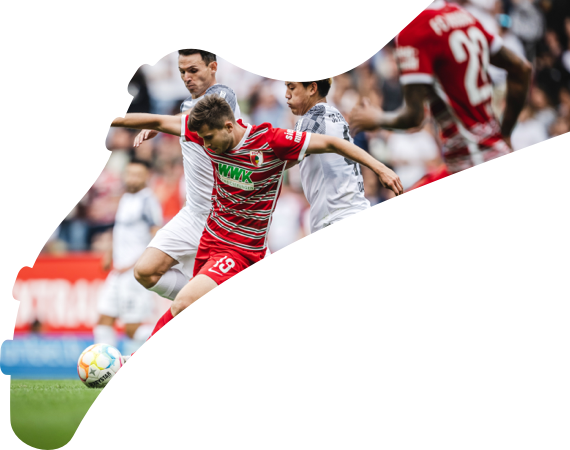
Timo Werner: Is the RB Leipzig and Germany star the prototype modern striker?
RB Leipzig and Germany forward Timo Werner has ripped up the familiar blueprint of what it is to be a striker and become the prototype of a modern, flexible forward.
After news of Werner putting pen to paper on a new deal with Leipzig through to summer 2023, bundesliga.com explains why he is such an asset...
Historically, a forward would wear a No.9 or No.10 jersey and be measured on their ability to put the ball in the back of the net – nothing more, nothing less. While that remains a vital remit of a modern-day striker, the position has evolved and there is arguably no better embodiment of the new role than Werner.
The 23-year-old could even wear a No.7 or No.11 jersey - shirt numbers typically given to wingers - such is his versatility. Even as an attacking midfielder Werner would be able to produce the goods, and this is where the Leipzig and Germany attacker, forward, winger or striker – label him as you will – stands out from the crowd.
Watch: An analysis of Werner's game

"Timo's development has been fantastic," said Ralf Rangnick, his coach in Leipzig last season and the man who, in his former role of sporting director, lured Werner to Leipzig in the first place. "He's come on leaps and bounds and we've played our part in that, and turned him into a national team player."
Indeed, Werner's rise to prominence accelerated ever since he joined Leipzig from Stuttgart in the summer of 2016. He struck 21 goals in his first season, when he started most frequently in a No.9 position, and helped Die Roten Bullen finish second behind Bayern Munich to secure UEFA Champions League football at the end of their first season in the Bundesliga.
Werner's position did not alter a great deal in his second campaign at the club, and his prolific scoring streak continued too with five goals in the first six games of the season. A back injury knocked him off track slightly and then coach Ralph Hasenhüttl subsequently experimented with him on the right wing. Leipzig may have lost his first game in a new position 2-1 to Freiburg, but Werner struck the consolation and showed initial glimpses of his adaptability.
Later that season, he was deployed on the left wing before being restored to the attack and scoring another of his 13 goals that term in Leipzig's historic first ever win over Bayern Munich. A fortnight later, after spearheading Germany's attack in a 1-1 draw with Spain, Werner delegated the scoring duties to Emil Forsberg and Yussuf Poulsen with two assists contributing to a 3-2 win over Hannover. Another string was duly added to his bow.
With Rangnick now on the Leipzig bench, Werner's role mutated again and he continued to alternate goals with assists – nine in total – to become one of the most lethal weapons in the Leipzig armoury. No longer could opposition defenders approach Werner assuming his eye was firmly fixed on the goal; they instead had to anticipate his increasingly unpredictable intentions and movements.
To say Werner has one strong and one weak foot would be inaccurate too – he can do just as much with either, and that is another reason why he is such a fearsome prospect to defend again. Ambidexterity, adaptability, versatility and the element of surprise render Werner not just a goalscoring menace, but also a defence-opening crowbar; a cunning multi-talented No.7 through to No.11, effective across the spectrum.
That has not been lost on Germany coach Joachim Löw either. Particularly when it comes to World Cups and European Championships, when squad numbers are limited, the presence of an individual who can fill no fewer than four different sets of boots is a boon, and this is where Werner excels. In 25 games for his county, which have yielded ten goals, he has tasted tactical tendencies he has not experienced at club level, playing on the left and right wing in a 4-1-4-1 formation as if he were born out there.
Like the proverbial duck to water, Werner has looked at home wherever he has been placed, and invariably done so with aplomb. Just look at the impact he made in the 2018 FIFA World Cup against Sweden, when he supplied Marco Reus' equaliser from the wing and then cut inside to earn a free-kick on the edge of the penalty area which Toni Kroos curled in for the winner.
Very few players are able to marry running at opposition defenders with the ball with an end product – be it a short pass, cross or direct goal. Yet it's exactly the sort of play that has propelled Werner into the limelight. Why risk him being suffocated in the centre of the park, out-muscled by bruising centre-halves, when he could be having his wicked way down the wing? Werner may already be a top striker, but he could also be a world-class winger.
So while his predominant position is as the classic centre forward, Werner is comfortable in any position across the line, as a false nine or even as an attacking decoy. Wherever you put this prototype of a modern-day forward, his game may vary, but the supply of goals and assists never runs dry.
Related news

Moukoko: The youngest goalscorer in Bundesliga history
Borussia Dortmund Youssoufa Moukoko achieved something historic against Union Berlin.

Timo Werner: 10 things
A handful of fun facts about RB Leipzig's turbo-charged striker.

How do Leipzig and Bayern stack up?
RB Leipzig welcome champions Bayern Munich to their Red Bull Arena next Saturday. How do the two title contenders match up?


